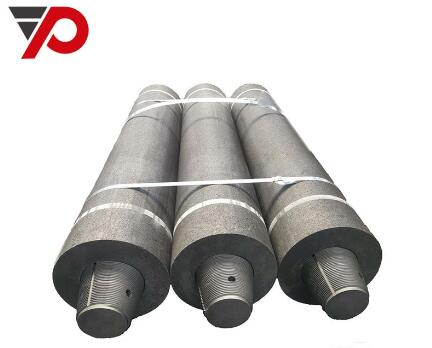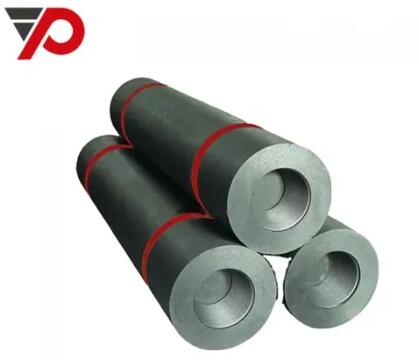What Is A Graphite Electrode?
- 13 Mar, 2023
- 4557 views
A graphite electrode is a type of electrode used in electric arc furnaces (EAFs) to melt and refine steel, iron, and other metals. It is made of graphite, a form of carbon that has unique properties such as high thermal conductivity, high melting point, low coefficient of thermal expansion, and good electrical conductivity. Graphite electrodes are essential components in the production of high-quality steel and are widely used in the metalworking industry.

Graphite electrodes are typically cylindrical in shape and range in size from 75 to 700 millimeters in diameter and 1 to 2 meters in length. They are installed in EAFs to conduct electric current and generate heat to melt and refine metal. When an electric current passes through the graphite electrodes, it generates an electric arc, which produces temperatures of up to 3,500°C (6,332°F). This extreme heat melts the metal in the furnace and allows impurities to be removed, resulting in a high-quality end product.
Graphite electrodes are chosen for EAFs due to their high electrical conductivity, low electrical resistance, and excellent thermal shock resistance. They are also relatively easy to shape and mold, which allows them to be manufactured in various sizes and shapes to meet the specific needs of different industries. The quality of graphite electrodes is determined by factors such as their electrical resistivity, flexural strength, thermal expansion coefficient, and oxidation resistance.
There are two main types of graphite electrodes: regular power (RP) and high-power (HP). RP electrodes are made from high-quality petroleum coke and are widely used in steel production. They are also used in non-ferrous metal production such as aluminum, silicon, and magnesium. HP electrodes, on the other hand, are made from high-grade needle coke and are used in the production of ultra-high-quality steel and other specialty alloys.
Graphite electrodes are typically manufactured through a process known as needle coke production. This involves heating petroleum coke at high temperatures to form needle-like structures that are then mixed with coal tar pitch and baked at high temperatures to produce graphite. The resulting graphite is then machined to the required size and shape for use in EAFs.

One of the main challenges in the graphite electrode industry is ensuring a stable supply of high-quality needle coke. The production of needle coke is a complex and expensive process, and there is a limited number of manufacturers worldwide. As a result, the cost of graphite electrodes can vary greatly depending on the availability and cost of needle coke.
In recent years, the graphite electrode industry has experienced significant fluctuations in price and demand due to factors such as changes in the global steel market, the closure of some needle coke plants, and the emergence of new EAF technology. Despite these challenges, the demand for graphite electrodes is expected to remain strong as the global steel industry continues to grow and evolve.
In conclusion, graphite electrodes are an essential component in the production of high-quality steel and other metals. Their unique properties make them ideal for use in EAFs, and their manufacture requires a complex and specialized process. Although there are challenges in the industry, the demand for graphite electrodes is expected to remain strong, and the industry will continue to evolve and innovate to meet the changing needs of the global metalworking industry.
We are a graphite electrode supplier. If you are interested in our products, please contact us now!
- Category:
- Arts & Culture
- No comments

